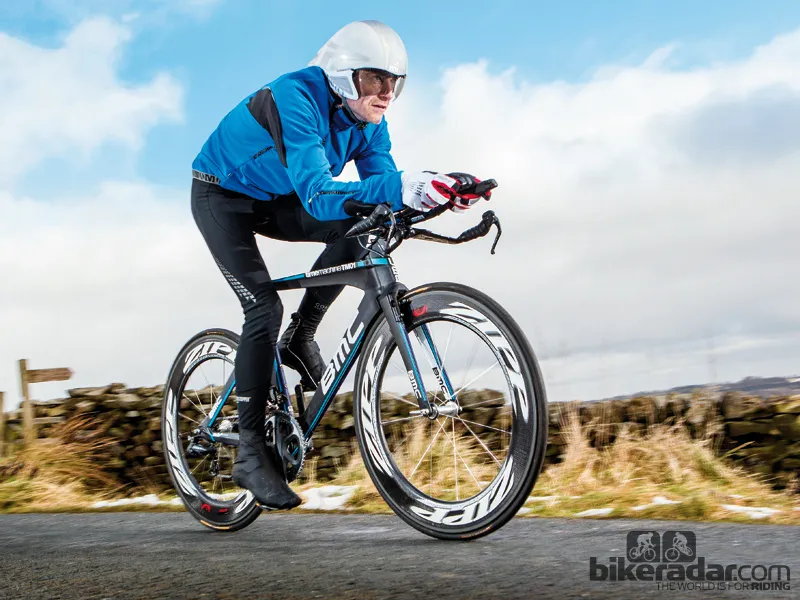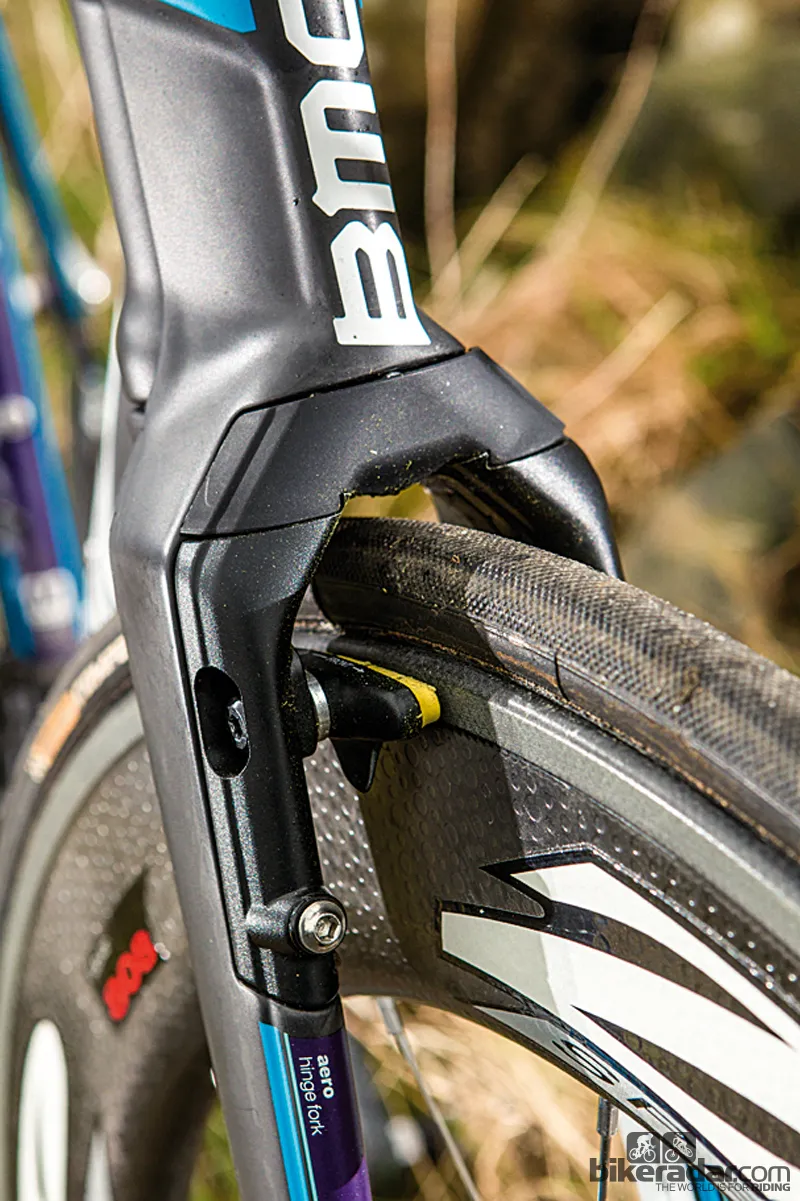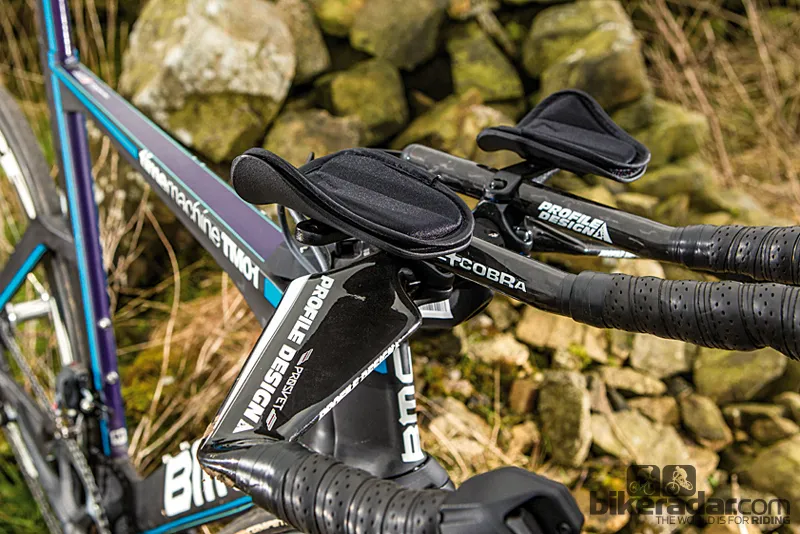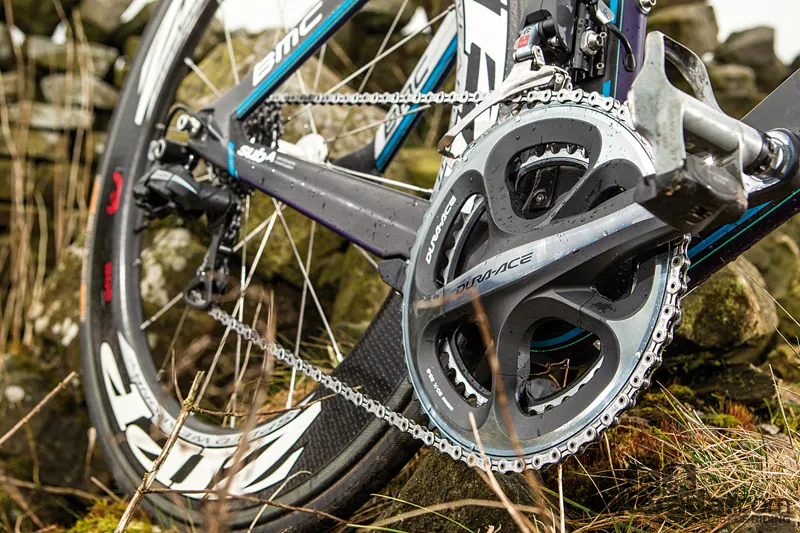One of the world’s fastest frames matched with arguably the fastest wheels and the most efficient aero transmission makes the BMC a genuine time traveller. Stiffness, steering and setup awkwardness mean it’s certainly not a smart option for the fainthearted though.
Ride & handling: Responsive, powerful, confident and efficiently speedy
Having ridden the BMC TM01 last year, we already knew to be wary of the steering lock at slow speed and we knew what configuration of the stem worked best for us. It’s worth taking the time to play around with positioning if you’re starting from fresh, though.
Find the sweet spot and the BMC makes its low-weight responsiveness clear straight from the off. Being able to shift instantly from the horns as you come out of corners, brake into them or stomp up climbs adds an extra element to the already extremely strong character of the BMC. Kicking hard, climbing fast and braking late doesn’t just save you precious seconds, it also has a very positive effect on rider morale.
The stiff, well-balanced frame and fork and sweet-handling wheels offer extra confidence on descents and in gusting conditions, although the TM01 is more prone to sideways shunting than some.
The cutting-edge aero features and power delivery mean it holds a straight-line gear longer than you’d expect your legs and lungs to manage, and the highly adjustable position makes it easy to find the optimum aero/ergo balance, no matter what distance you’re riding.
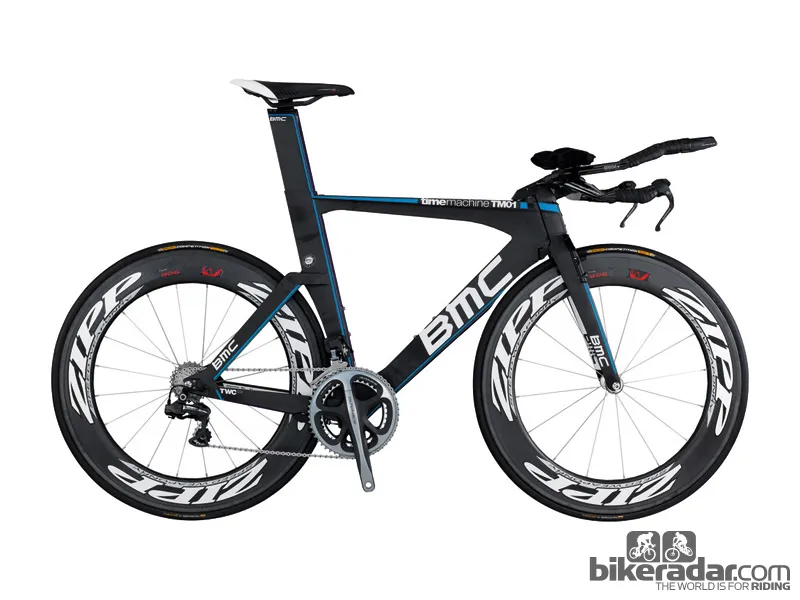
Frame & equipment: Adjustable cockpit but very stiff
If you’re a fan of shapely curves, look away now. From the integrated brake bayonet fork through to the thumbwheel adjuster-equipped dropouts, the TM01 is such a structural straight edger it looks as though it was designed on an Etch-A-Sketch.
Fans of retro toys will see a lot of similarity between the multiple bolt-together segments of the integrated P2P stem and a Rubik’s Snake too. Despite the aggressively angular looks, this handlebar-holding jigsaw puzzle is just one part of one of the most adjustable aero bikes around.
Not only can the stem be configured in a massive variety of lengths and rises, but the seatpost offers multiple fore and aft saddle positions for conventional time trial seat positions.
Wind tunnel testing is very evident in the Sub A aerodynamic tweaks too, including trip wire ledges for smoother overall airflow and truncated aerofoil sections on the seatpost, seat tube and down tube spine.
The front V-brake is buried in the wide stance fork with a plastic top shroud for minimal drag, while the rear brake hides under the chainstays. The thumbwheel adjusters in the horizontal dropouts ensure perfect wheel positioning in relation to the wheelhugger cut-out, which also hides the door to the Di2 battery compartment.
The seatpost is secured with a hidden wedge inside the top tube too, creating a totally flush and clean clamp area. Allowing for the weight of the brakes, it’s also extremely light for an aero chassis.
As ingenious as it is, there are some practical issues with the TM01. Firstly, the bayonet fork gives such a restricted steering lock that you’ll have a fight turning round in a country lane. Not a big issue at race-speed perhaps, but potentially very embarrassing if you’re just pootling around.
Secondly, that multi-segment stem relies on several bolts hidden deep beyond the reach of your average saddlebag multi-tool, so make sure you do them up damn tight before they shake loose and leave you bar-less.
Finally, the rear brake is prone to staying slack and rubbing the rim on wider wheels unless you get the cable tension spot on.
When the brakes are set up right they’re brilliant though, with huge amounts of power but enough feedback to keep you the right side of skidding once you’re used to them.
The latest blunt-nosed, fat-bellied Firecrest profile Zipp 808 tubular wheels are some of the best handling and blisteringly quick wheels available too. Appropriately rapid glue-on rubber comes from Continental. The Fizik saddle is remarkably comfortable considering its flat-top looks, and the Profile carbon cockpit offers masses of adjustment.
The multiple instantaneous and immaculate shift options of Shimano’s Di2 gearing give a massive ratio response advantage on rolling courses. If you’re prepared to settle for the 10-speed Dura-Ace 2012 version, rather than waiting for the 11-speed 2013 sets – and most manufacturers are reporting increasingly long waiting times – then you can currently grab a £1,000 saving on the list price of this no-expense-spared blistering speed machine.
This article was originally published in Triathlon Plus magazine, available on Zinio.
